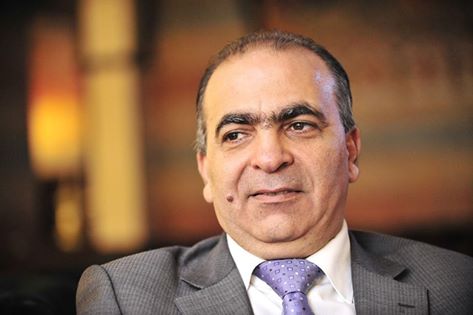Since the tragedies of Zabadani and Madaya and, after that, Daraya and Moadamiya, Russia and Iran have relied on the same method to subjugate the cites of the Damascus countryside one after the other.
The process begins with encircling the city and imposing a heavy siege upon it, leading to a shortage of food and medicine, and depriving the residents and their children of the necessities of life. This is followed by the bombardment of health facilities and markets in the city, while the siege is tightened until the people begin to budge from the heavy human losses, starvation and lack of security.
At the appropriate moment, the so-called reconciliation councils, which are formed inside these cities at the request of Assad’s security agencies, are mobilized to organize the relationship between its besieged residents and the militias which are blockading them (as has been done in all countries under occupation). The negotiations between these councils and the security agencies begin in order to ease the blockade and the lives of people, as well as bring in some of the items needed to save children and the wounded. Then an ugly process of blackmail begins, starting with the blackmail of the council itself and the attempts to conscript its members as much as possible. This is proceeded by attempts to build a network of mafia-like interests between the officers spearheading the siege, some of the members of these councils and some members of armed groups inside the city, in order to divide the returns from smuggling the necessary goods for the city’s residents, which reach customers at four times their regular price. The process continues in this fashion until the day the orders are issued by the Iranians and Russians that the city needs to be returned from the control of the armed groups, some of whom have been infiltrated and some of whom have been corrupted.
The reconciliation councils carry out a deal with the regime security agency which stipulates that militants safely depart to Idleb in exchange for handing over their weapons to the regime agencies and the Lebanese militias which support them. If some of the groups reject the deal, regime helicopters drop barrel bombs on the city so that the reconciliation council can take advantage of panicked residents to incite demonstrations against the groups which rejected the deal. And so, under popular pressure and barrel bombs, those who have not been persuaded are persuaded. Then the green buses come to carry the evacuees to Idleb, and the city is surrendered.
Even though the same scenario has played out in one city after another in the Damascus countryside, there has been a notable lack of initiative from groups in other cities in solidarity with areas facing bombardment (just as a reminder, no one sees any role for Jaish al-Islam and its weapons, which it has long used against its rivals in the Ghouta throughout this time). Indeed, for the most part these groups have acted as if they are living on another planet, while the space between these cities and areas is not more than a few kilometers, which indicates the weakness and extent to which these groups have been infiltrated.
But why do Iran and Russia insist that the fighters go to Idleb exclusively? Areas of the Ghouta like Houran and Qalamoun are under opposition control as well and are much closer than Idleb, so these fighters and their families could go there easily and at less expense.
The Russian-Iranian plan is to work on regaining control of all the Syrian cities and residential areas outside their grip (including those that are waiting for their turn and have not surrendered yet) and not under the control of the Islamic State group and the Nusra Front. They mean to cleanse them of all rebel groups that are not classified as terrorist groups by the United Nations before the newly elected American president arrives to the White House and begins to exercise his authority — that is, before the end of the Obama administration, which has given the Iranians and the Russians the green light to complete their dominance over Syria as long as they guarantee the security of Israel and keep President Bashar al-Assad from chemical weapons and the mullahs of Iran from their nuclear ambitions.
What the Russians and Iranians want is for the Trump administration and its incoming hawks to find themselves faced with a fait accompli: In Syria there will no longer be areas controlled by the moderate armed opposition (according to the United Nations classification) so that the regions of Syria are comprised mostly by areas under the control of Iran and Russia and isolated areas under the control of Nusra and ISIS (Idleb and Raqqa). This will give the new U.S. administration one choice: participate in the war against terrorism and bless Russia and Iran's occupation of Syria without obstructing their plans, as both Supreme Leader Ali Khamenei and Presidnet Vladimir Putin are hoping.
Will the Russian-Iranian strategy succeed in Syria? Let us wait and see how the Trump administration behaves — for there may be surprises that do not agree with the tsar of the Russians or the great mullahs of Iran.
Responsibility for the information and views set out in this article lies entirely with the author.


